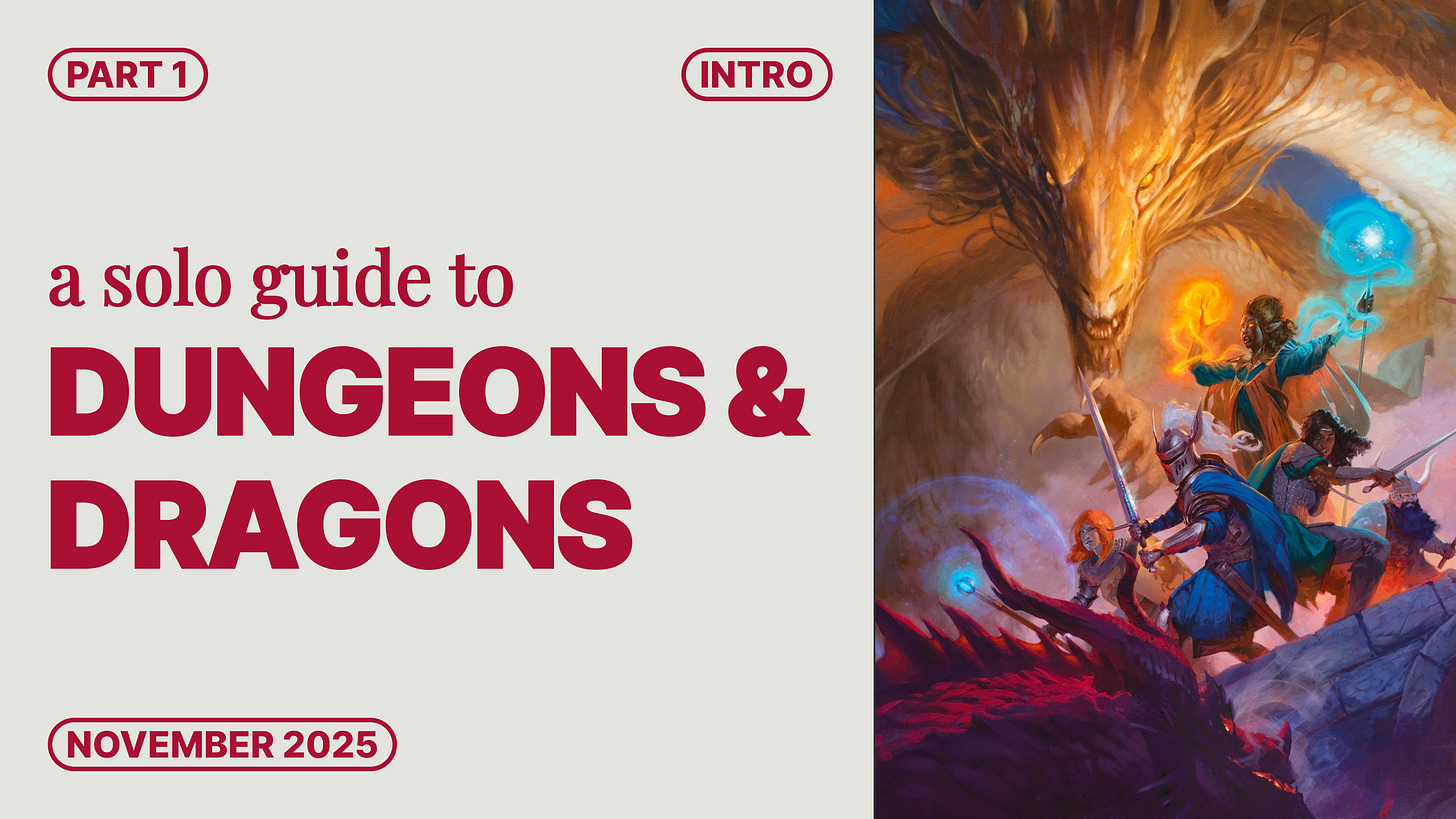Hey everyone — today I want to talk about how to play Dungeons & Dragons solo.
We’ll cover:
How many characters to run (and why that matters)
How to build your party for solo play
How to adjust encounters without rewriting the whole module
How to handle the “meta knowledge” you gain while reading and DMing at the same time
And finally, what kind of content is coming next in this series
Why Play Solo D&D?
D&D is usually a group-focused tabletop RPG. Modules are written for about four players + a DM, and most official adventures assume that structure.
Party Size: The Big Decision
Option 1: Run Four Characters
This matches how adventures are designed.
Pros
Very little encounter rebalancing required.
You can build exactly the party you want. Want two barbarians? Go for it.
Cons
You are the DM and all four players.
Tracking spells, traits, abilities, items, and leveling slows the game down fast.
Great if you already know the game really well. Overwhelming if you don’t.
Option 2: Run One Character
This is the opposite approach.
Pros
Easy to manage. You know your character very well.
Strong storytelling and roleplay experience — you are the hero.
Cons
Most encounters become deadly very fast.
You’ll need to frequently adjust monster HP, AC, multiattacks, and encounter size.
Can feel like you’re constantly patching the adventure as you go.
To compensate, some players start at level 3 or higher, or give extra boons — but that can feel narratively off.
Option 3: Run Two Characters (What I Recommend)
This is the sweet spot.
Why Two Works So Well
You get party synergy (frontliner + caster is a classic combo).
It reduces complexity massively — only two character sheets to reference.
Encounter balancing becomes simple: divide enemy numbers by 2.
You still get meaningful roleplay dynamics — Frodo & Sam, Batman & Robin, Geralt & Dandelion.
This is how I run solo D&D 90% of the time.
Handling Meta Knowledge
When you run a module, you inevitably learn things your characters should not know:
Where secret doors are
What monsters are behind a door
Monster resistances and abilities
Trap locations
Don’t fight the meta. Embrace it.
Solo D&D is not the same genre as group D&D. It’s more gamified — and that’s okay.
Here’s how I handle it:
I don’t read the entire adventure ahead of time. I progress as I play to preserve surprise.
I do use monster stat block knowledge during combat. My characters are experienced heroes — they “know things.”
For secret doors or traps, I roll once to see if the character notices or disarms. If they fail, we move on. No re-rolls.
This keeps solo play fair, fast, and fun.
Roleplaying NPCs
For social interactions, I keep it simple:
If persuasion / intimidation / negotiation could change an outcome, I roll for it.
If the roll succeeds → better reward or better outcome.
If it fails → something gets worse (less gold, worse relationship, etc).
This keeps NPC encounters from just being “me talking to myself.”
What’s Next
I’m going to turn this into a full solo campaign walkthrough series.
The plan:
Pick a published adventure
Create a two-character party
Write one article per chapter/session
Show how I balance encounters
Show how I handle NPCs and narrative decisions
Share session notes you can directly use
If you’d like to help choose the first adventure, I’ll post a poll soon — or just comment below with your pick.
Let Me Know
Would you like:
Session write-ups
Step-by-step party build guides
Video versions / playthroughs




